Key takeaways:
- Visual mood in film significantly influences the audience’s emotional experience through elements such as lighting, color, sound design, and texture.
- Techniques like framing, movement, and pacing can enhance emotional connectivity, often without the need for dialogue.
- Practical tools, including software for mood boards and colored gels, help filmmakers create and communicate visual moods effectively.
- Attention to location and costume design, along with early collaboration among departments, are essential for cohesive visual storytelling.

Understanding Visual Mood in Film
Visual mood in film is an essential element that shapes the audience’s emotional journey. I remember watching a classic noir film, where the dim lighting and high contrast created a palpable tension. It made me realize how much a simple choice of color and shadow can draw the viewer into a character’s despair or excitement. How often do we find ourselves feeling deeply connected to a scene simply because of its visual presentation?
When I think about visual mood, I can’t help but reflect on how music and imagery intertwine. For instance, there have been moments when I’ve watched a scene with a haunting melody playing, and I felt the mood shift instantly, even before the characters spoke. Have you ever noticed how a particular hue can trigger a memory or emotion? It’s fascinating how filmmakers use color grading to evoke specific feelings—like the warmth of golden tones that can make us feel nostalgic or the coldness of blue shades that can evoke a sense of isolation.
Ultimately, understanding visual mood involves both intention and perception. I’ve often pondered, what visual cues resonate most deeply with us? For a filmmaker, it’s about crafting a visual language that speaks to the audience’s subconscious. Creating a visual mood isn’t just about aesthetics; it’s a powerful narrative tool that enriches storytelling. The more we dissect these elements, the more we can learn to use them effectively in our own projects.
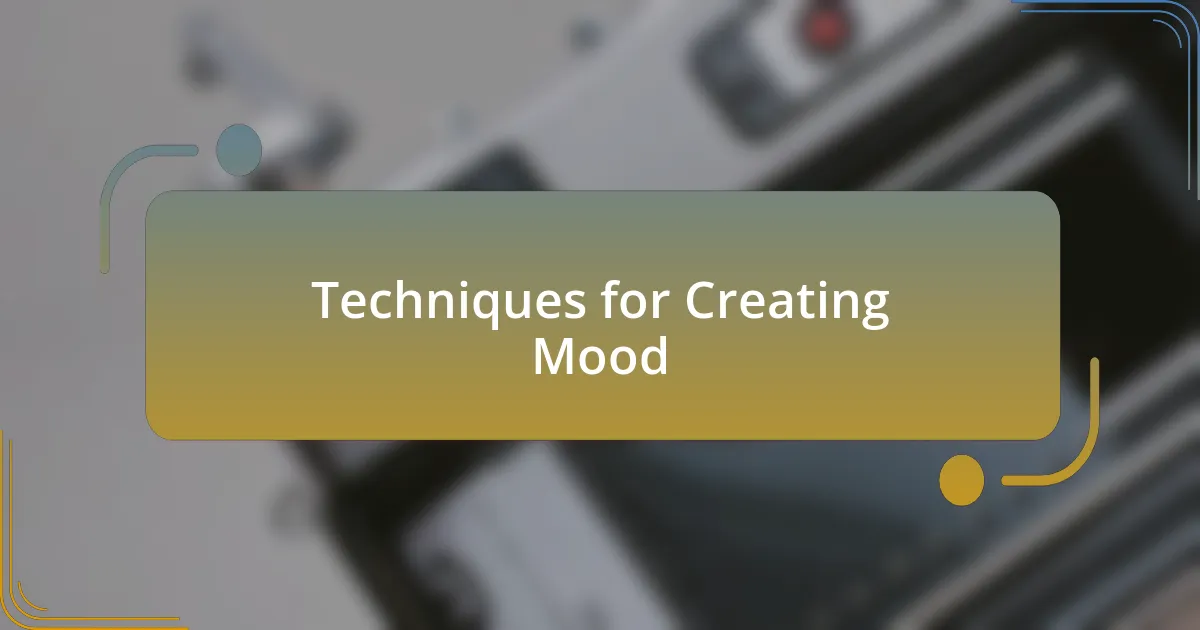
Techniques for Creating Mood
Lighting choices can dramatically alter the mood in a film. I recall working on a short film where we experimented with natural light during golden hour. The soft, diffused glow not only highlighted our protagonists’ warmth but also sent an unmistakable message of hope. Can you imagine how a scene might feel completely different if we’d chosen harsh, fluorescent lighting instead?
Color palettes are another vital technique. When I designed the visuals for a documentary, I opted for earthy tones to create a sense of authenticity. It struck me how effectively colors can anchor the viewer in a specific environment, evoking nostalgia or grounding them in reality. Have you ever noticed how a vibrant red can spark excitement, while muted greys might elicit somber reflections? It’s a powerful reminder of how nuanced these choices can be in shaping our perception.
Sound design also plays a crucial role in creating mood. In my experience, a well-timed sound cue can elevate a moment from ordinary to extraordinary. I remember a scene where we used silence to build anticipation, only to punctuate it with a sudden, jarring sound. That contrast not only startled the audience but also drew them deeper into the narrative. Have you felt that electric shift in a theater, where sound transforms visual storytelling? It’s fascinating how intricately sound and visuals can intertwine to craft an immersive experience.
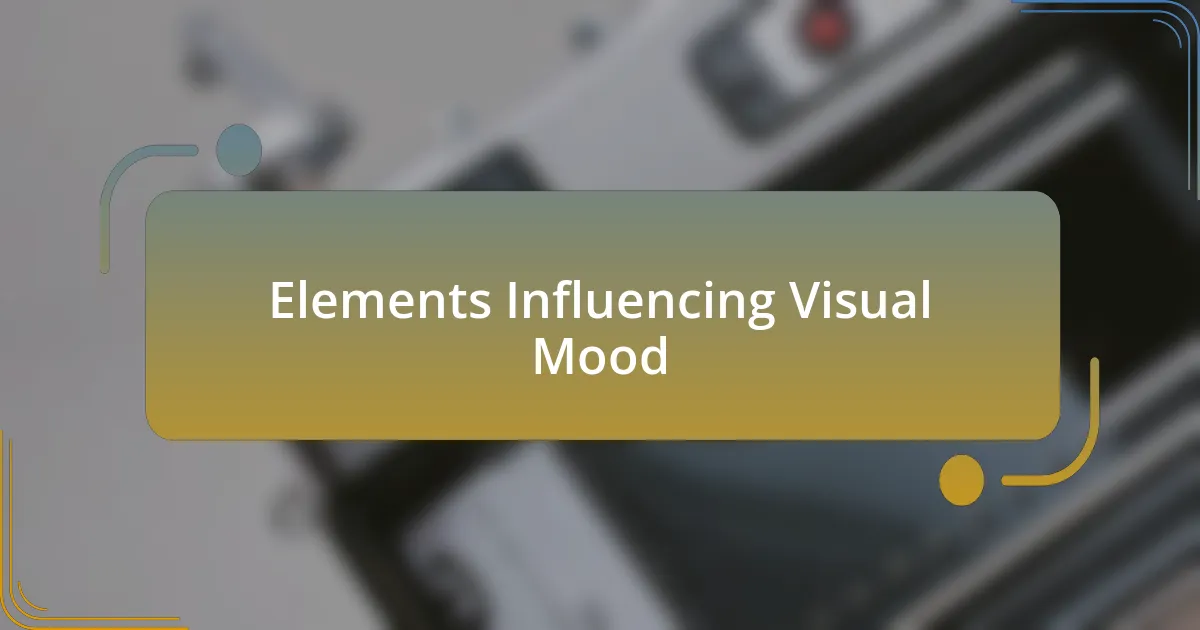
Elements Influencing Visual Mood
When it comes to visual mood, the framing of a shot is often underestimated. I distinctly recall a project where we used tight framing for intense, personal moments. The close-ups allowed the audience to connect with the characters’ emotions on a deeper level. Have you ever watched a scene where the camera felt like it was right there with the character, amplifying their feelings?
Movement and pacing also contribute significantly to visual mood. On a recent project, I chose to employ slow, deliberate camera movements during moments of reflection. This decision created a serene atmosphere, encouraging the audience to soak in the weight of the scene. Conversely, in action sequences, quick cuts and frenetic camera work can instill a sense of chaos and urgency. Isn’t it fascinating how these techniques influence our emotional response without a single word being spoken?
Textures within a scene are another critical element that can shift visual mood effectively. I once worked on a film that juxtaposed smooth, polished surfaces against gritty, rough textures. This contrast not only told a story visually but also evoked a visceral reaction from viewers. The tactile quality made them feel the environment, almost as if they could reach out and touch it. Have you ever noticed how the feel of a setting can transport you, making you experience the scene more vividly?
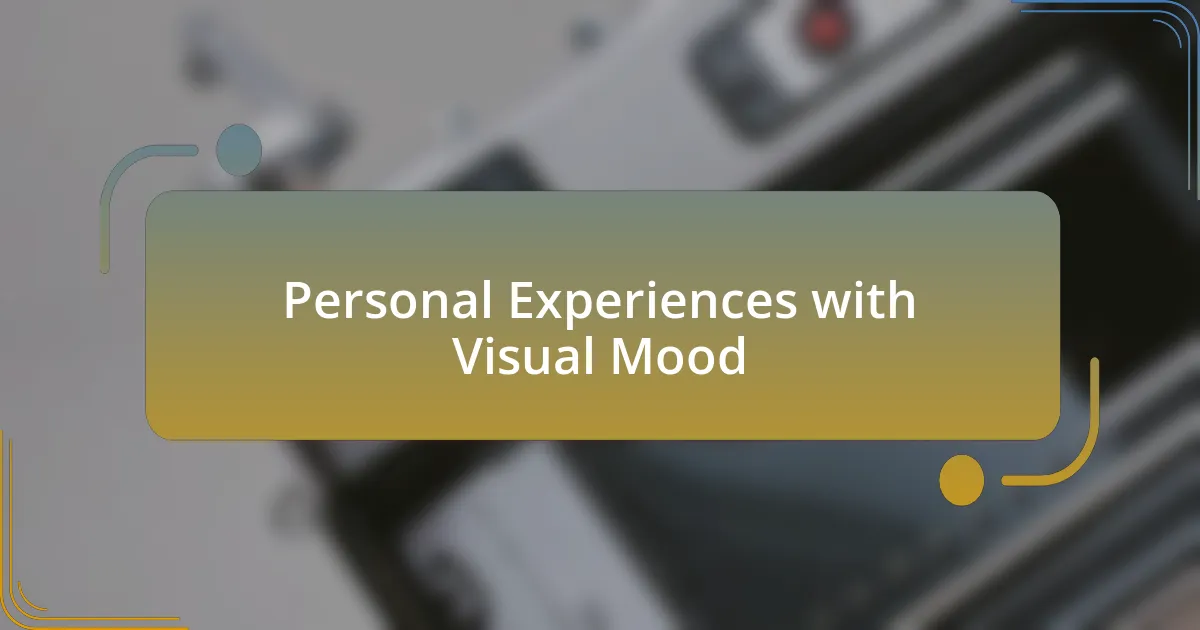
Personal Experiences with Visual Mood
During my early days in film, I was part of a project that focused on color grading to enhance the visual mood. We experimented with muted earth tones to evoke a sense of nostalgia, which was particularly powerful in scenes set in the past. I still remember the feeling of watching the final cut and getting chills; the colors transformed the narrative and pulled me into a different time. Have you ever felt how colors can shift your perception of a story completely?
Lighting is another aspect that profoundly shaped my experiences with visual mood. On a recent short film, I opted for harsh, high-contrast lighting during a pivotal confrontation scene. The shadows created a menacing atmosphere, heightening the tension and keeping the audience on edge. It made me realize how critical the right lighting is for setting the emotional tone—do you remember a moment in a film where the shadows seemed to tell a story of their own?
One of my favorite memories revolves around a documentary I worked on, where we used natural light to capture raw emotions. We shot during the golden hour, allowing the soft, warm light to wash over the subjects. The resulting visuals felt honest and intimate, making it impossible not to connect with the families we were documenting. Isn’t it incredible how harnessing the sun’s light can turn a simple scene into a heartfelt moment?
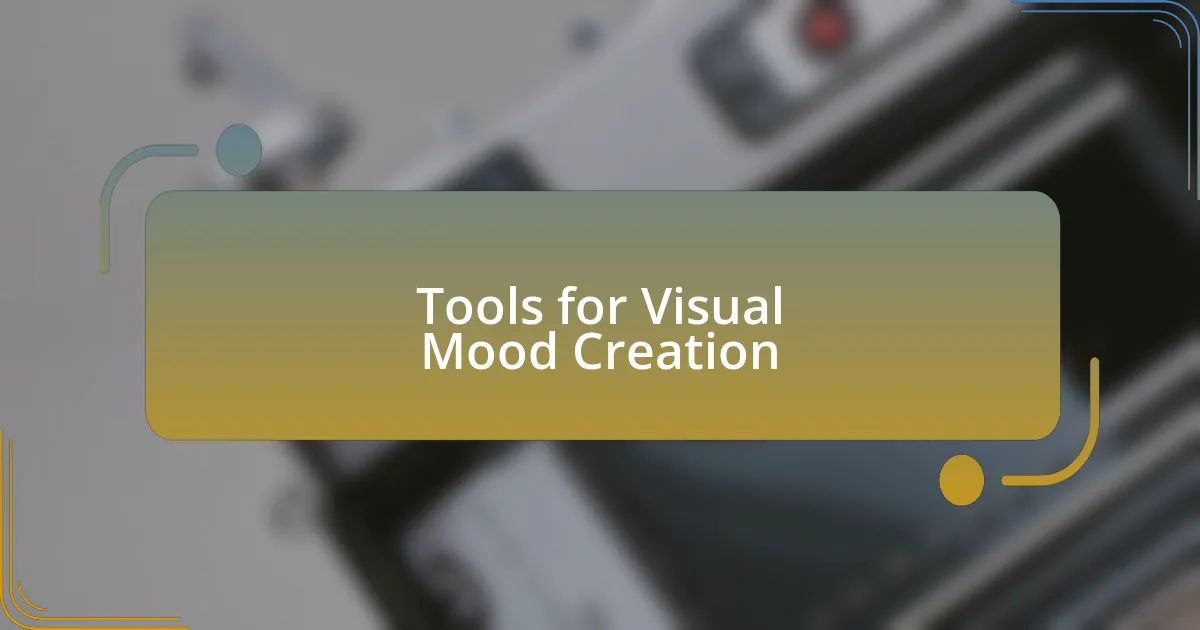
Tools for Visual Mood Creation
When it comes to creating a visual mood, I find that software tools like Adobe Photoshop and DaVinci Resolve are indispensable. I remember a specific project where I used Photoshop to create mood boards that highlighted my color palette choices. This visual blueprint guided our cinematography and kept the entire team aligned. How often do you think a simple mood board can influence an entire film’s direction?
Another essential tool for me is the use of practical effects, such as colored gels for lights. On one film, we used deep red gels for a dream sequence, which enveloped the characters in an ethereal glow. It was fascinating to see how a small change in lighting could evoke feelings of both passion and danger. Have you ever wondered how much of an emotional punch lighting can deliver in just a few frames?
Lastly, I cannot underestimate the power of music and sound design in setting the visual mood. I often collaborate with sound designers to create a specific auditory landscape that complements the visuals. In one memorable project, we intertwined sounds of rustling leaves with a melancholic score, enhancing the emotional weight of a pivotal scene. Doesn’t sound have the uncanny ability to elevate visuals and immerse viewers even deeper into a story?
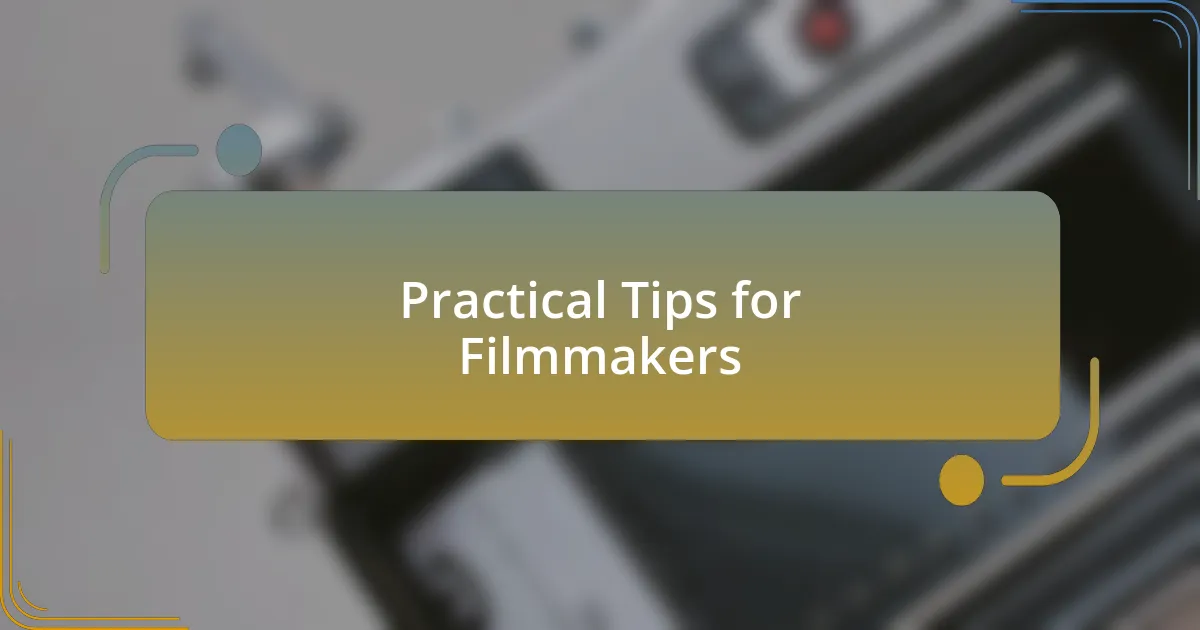
Practical Tips for Filmmakers
One practical tip for filmmakers is to pay close attention to their location choices. When scouting for locations, I’ve often found that a setting can speak volumes about the mood of the film. For example, shooting a scene in an abandoned warehouse created an inherent tension that complemented our story. Have you ever considered how much a location can shape the emotional landscape of your narrative?
Another aspect I focus on is the importance of costume design. In one project, the wardrobe choice of muted colors for our protagonist highlighted their internal struggle, making their journey more relatable. It’s incredible how clothing can serve as a visual cue to an audience; have you thought about how subtle details can tell an entire story on their own?
I also advocate for collaboration among departments early in the process, especially between the cinematography and art teams. In a recent production, our cinematographer and production designer worked closely to ensure that the color palette of the sets aligned perfectly with our lighting scheme. This synergy not only saved us time but elevated the visual storytelling. How often do you check in with your team to ensure everyone is on the same creative wavelength?